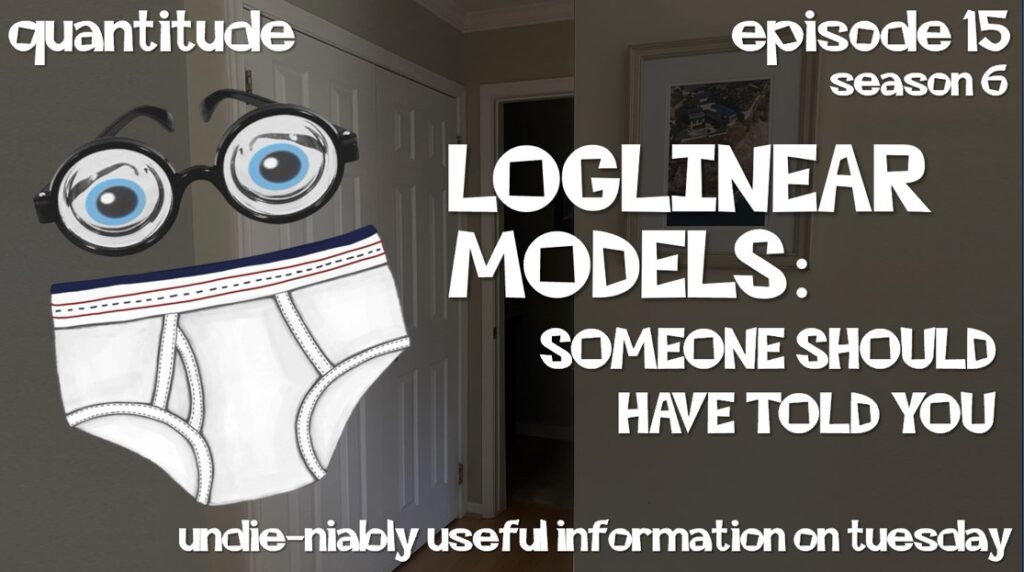In this weeks episode Greg and Patrick talk about loglinear models as a clever method to deconstruct the potential dependencies among two or more categorical variables. Along the way, they also discuss Children of the Corn, Mr. Magoo glasses, tighty whities, Fogo de Chão, blinded by hand soap, logarithms as drug mules, Euler Euler Euler, conspiracy boards and red yarn, M&M colors, depth perception problems, and apologies to Mrs. Johnson.
Related Episodes
- S6E08: The Statenfreude of Generalized Estimating Equations
- S3E17: Logistic Regression: 2 Logit 2 Quit
- S2E27: (re)Connecting With Discrete Data
Suggested Readings
Agresti, A. (1989). Tutorial on modeling ordered categorical response data. Psychological bulletin, 105(2), 290.
Christensen, R. (2006). Log-linear models and logistic regression. Springer Science & Business Media.
Fienberg, S. E. (2000). Contingency tables and log-linear models: Basic results and new developments. Journal of the American Statistical Association, 95(450), 643-647.
Goodman, L. A. (1986). Some useful extensions of the usual correspondence analysis approach and the usual log-linear models approach in the analysis of contingency tables. International Statistical Review/Revue Internationale de Statistique, 243-270.
Marascuilo, L. A., & Busk, P. L. (1987). Loglinear models: A way to study main effects and interactions for multidimensional contingency tables with categorical data. Journal of Counseling Psychology, 34(4), 443.
Nelder, J. A. (1974). Log linear models for contingency tables: a generalization of classical least squares. Journal of the Royal Statistical Society: Series C (Applied Statistics), 23(3), 323-329.

